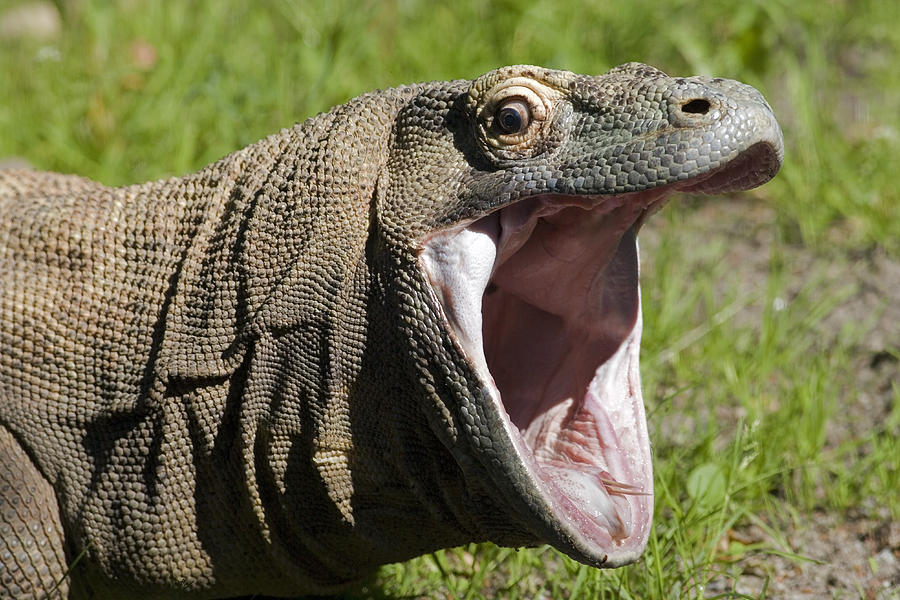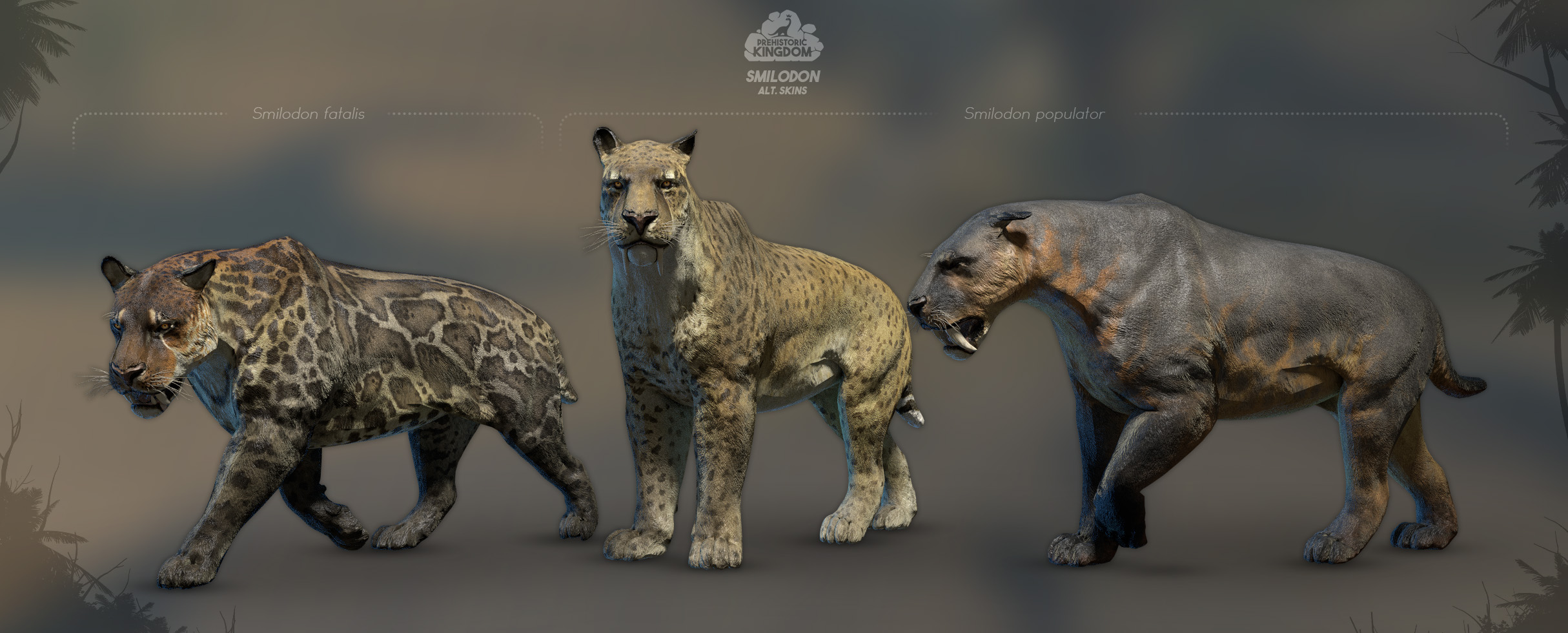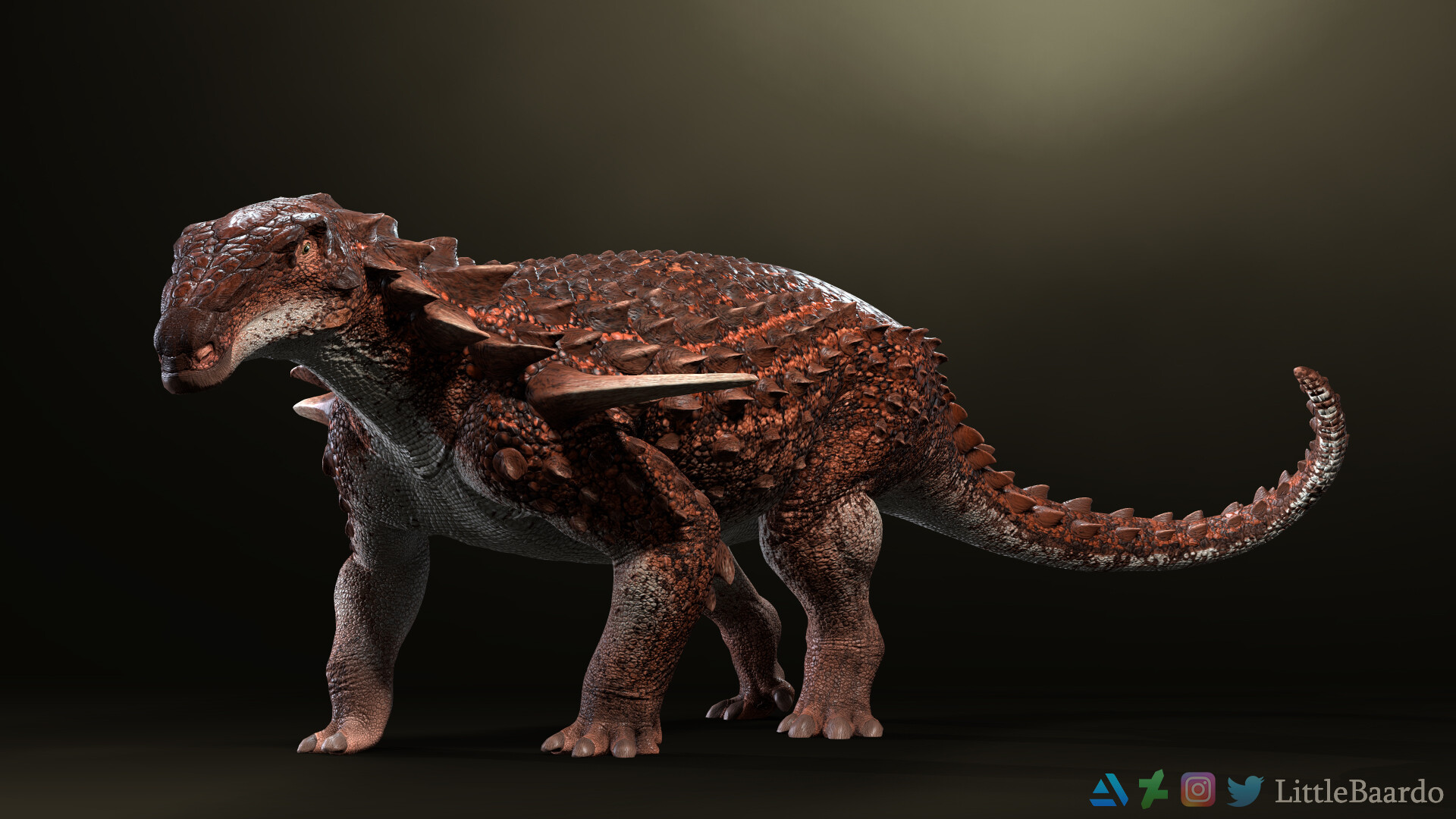Yowza
Sidekick
- Joined
- Aug 8, 2015
- Messages
- 2,121
- Reaction score
- 473
- Points
- 73
I wonder how many of the Carnivores had a toxic bite similar to the Komodo dragon?
The Megalania is a distant relative of the Komodo said to be larger and roamed Australia 40000 years ago is the largest toxic predator known as mentioned in this link describing recent additional discoveries concerning Komodo Dragon's Toxin:
The Current Komodo Dragon:


Some things I've noticed about this creature watching some nature videos on it just recently:
*There's some interesting videos I just found on Youtube concerning the current Komodo Dragon (way more deadly and quick than they look as seem kind of puppet like the way they saunter about but can run up about 12 mph doing a beeline over a decent distance). There's some that are so graphic I probably shouldn't post a link to it here but involves a deer essentially immobile due to the poison being slowly eaten alive. A pretty bad way to go.
*There's another youtube video ("Live Deer Ripped Apart By Komodo Dragons" it's called) of a crowd of them essentially all feasting on a live deer at once also too graphic to link to. You can literally hear the sounds of them crawling over each other to get to the deer and don't even bother chewing on the torn chunks but just inflate their necks and swallow it whole never being satiated seemingly as they can eat up to 80% of their body weight.
*There's another video of one biting a water bison then a bunch more casually coming out of the bush watching it for however long it takes as it slows down. Or, there's a separate video of a Komodo simply killing a smaller goat by catching it and bringing it down then a couple more appear out of nowhere and there's nothing left. Supposedly they can eat 80% of their body weight and horf down bone, cartillage, and everything down that long neck of their's sitting in belly almost the size of the animal itself. Even a small Komodo could probably horf down a human leg or arm quite easily.
*Their venom is so toxic there's now some disagreement on whether it's the 50 strains of bacteria from the sewer reservoir inside their gums between their teeth that wells up from when the jaw applies pressure around something grinding it with serrated teeth or another kind of venom as described in link above that simply causes the blood pressure to crash and leave one unable to fight back or move going into shock within a few hours for a human. The way they hunt can be seen under a Youtube video entitled "Powerful Komodo Dragons Observed Hunting In the Wild". This is also graphic in some parts but mainly focuses on the film crew spinning in circles with sticks in hand watching as more Komodo's keep showing up to a feast.
*They're quite a nightmare to deal with and can smell blood from 5 miles away. One would have to be turning in a circle constantly stick in hand ready to fend some off as they're very sneaky and quick especially if close by and so many popping out of no where honing in on whatever's in the scent area. In fact they've been known to dig up human graves by some accounts.
*They can be cannibalistic. So ravenous there's a nature photo I found online of a smaller one sticking it's head into the mouth of a bigger one to snatch it's food out. Komodo dragon sticks its head inside another one’s mouth to snatch its food | Daily Mail Online
*They're quite heavy as can be seen in videos of them fighting and hissing at one another. About 150-200 lbs typical but smaller ones can come out of nowhere and bigger ones said to be about 300 lbs too. Including tailspan 10 ft is typical. Komodo Dragon (Varanus komodoensis) | about animals and
The Megalania is a distant relative of the Komodo said to be larger and roamed Australia 40000 years ago is the largest toxic predator known as mentioned in this link describing recent additional discoveries concerning Komodo Dragon's Toxin:
More on Megalania:Komodo Dragons Kill With Venom, Researchers Find
Komodo dragons kill using a one-two punch of sharp teeth and a venomous bite, scientists have confirmed for the first time.
The find dispels the common belief that toxic bacteria in the Komodos' mouths are responsible for ultimately killing the dragons' prey.
An animal that escapes a Komodo's initial attack soon weakens and dies. The fierce carnivore tracks the wounded creature and dines at its leisure once the prey collapses.
Researchers have long thought that the Komodo dragon, native to Indonesia, kills via blood poisoning caused by the multiple strains of bacteria in the dragon's saliva.
But "that whole bacteria stuff has been a scientific fairy tale," said Bryan Fry, a venom researcher at the University of Melbourne in Australia.
Fry and colleagues studied the biochemistry of Komodo venom after they had the rare opportunity to examine two dragons from zoos that both had to be put down due to terminal illnesses.
The team found that the dragon's venom rapidly decreases blood pressure, expedites blood loss, and sends a victim into shock, rendering it too weak to fight.
In the venom, some compounds that reduce blood pressure are as potent as those found in the word's most venomous snake, western Australia's inland Taipan.
Komodo Combo Attack
While his colleagues expressed surprise at the findings, Fry said he wasn't so shocked.
His earlier research had shown that other lizard species—such as iguanas, legless lizards, and monitor lizards—are also venomous.
In fact, Fry estimates that close to a hundred of the more than 5,000 known lizard species use venom.
What is surprising, Fry said, is Komodo dragons' elaborate venom-delivery system.
"It's the most complex duct system described in reptiles to date," he said.
Snakes typically have a single venom duct that leads to their fangs. But Komodos have multiple ducts located between their teeth.
However, this means Komodo dragons don't deliver their venom as efficiently as snakes, Fry said.
Rather than injecting venom directly via a forceful bite, the dragons use a specialized bite-and-pull motion to ooze the toxin into wounds during a sustained, frenzied attack.
(Related: "Komodo Dragon's Bite Is 'Weaker Than a House Cat's.'")
The combination of venom and multiple lacerations from the lizards' sharp, serrated teeth is what makes the dragons so deadly.
"They're not like the cobra, where venom is the only game in town. Komodos have a combined arsenal," Fry said.
The findings suggest that the Komodo's ancient relative, the Megalania, used a similar venom-plus-wounding approach.
The giant lizard, which roamed Australia about 40,000 years ago, measured about 13 feet (4 meters) long.
Fry's work, published in this week's issue of the Proceedings of the National Academy of Sciences, could mean that the Megalania was the largest venomous animal to have ever lived.
The Current Komodo Dragon:


Some things I've noticed about this creature watching some nature videos on it just recently:
*There's some interesting videos I just found on Youtube concerning the current Komodo Dragon (way more deadly and quick than they look as seem kind of puppet like the way they saunter about but can run up about 12 mph doing a beeline over a decent distance). There's some that are so graphic I probably shouldn't post a link to it here but involves a deer essentially immobile due to the poison being slowly eaten alive. A pretty bad way to go.
*There's another youtube video ("Live Deer Ripped Apart By Komodo Dragons" it's called) of a crowd of them essentially all feasting on a live deer at once also too graphic to link to. You can literally hear the sounds of them crawling over each other to get to the deer and don't even bother chewing on the torn chunks but just inflate their necks and swallow it whole never being satiated seemingly as they can eat up to 80% of their body weight.
*There's another video of one biting a water bison then a bunch more casually coming out of the bush watching it for however long it takes as it slows down. Or, there's a separate video of a Komodo simply killing a smaller goat by catching it and bringing it down then a couple more appear out of nowhere and there's nothing left. Supposedly they can eat 80% of their body weight and horf down bone, cartillage, and everything down that long neck of their's sitting in belly almost the size of the animal itself. Even a small Komodo could probably horf down a human leg or arm quite easily.
*Their venom is so toxic there's now some disagreement on whether it's the 50 strains of bacteria from the sewer reservoir inside their gums between their teeth that wells up from when the jaw applies pressure around something grinding it with serrated teeth or another kind of venom as described in link above that simply causes the blood pressure to crash and leave one unable to fight back or move going into shock within a few hours for a human. The way they hunt can be seen under a Youtube video entitled "Powerful Komodo Dragons Observed Hunting In the Wild". This is also graphic in some parts but mainly focuses on the film crew spinning in circles with sticks in hand watching as more Komodo's keep showing up to a feast.
*They're quite a nightmare to deal with and can smell blood from 5 miles away. One would have to be turning in a circle constantly stick in hand ready to fend some off as they're very sneaky and quick especially if close by and so many popping out of no where honing in on whatever's in the scent area. In fact they've been known to dig up human graves by some accounts.
*They can be cannibalistic. So ravenous there's a nature photo I found online of a smaller one sticking it's head into the mouth of a bigger one to snatch it's food out. Komodo dragon sticks its head inside another one’s mouth to snatch its food | Daily Mail Online
*They're quite heavy as can be seen in videos of them fighting and hissing at one another. About 150-200 lbs typical but smaller ones can come out of nowhere and bigger ones said to be about 300 lbs too. Including tailspan 10 ft is typical. Komodo Dragon (Varanus komodoensis) | about animals and
Last edited:







 Plus the CG models are absolutely the worst I've ever seen, and I should note that it's been found that they were bought from a website that carries malware.)
Plus the CG models are absolutely the worst I've ever seen, and I should note that it's been found that they were bought from a website that carries malware.)